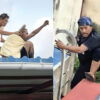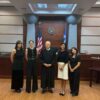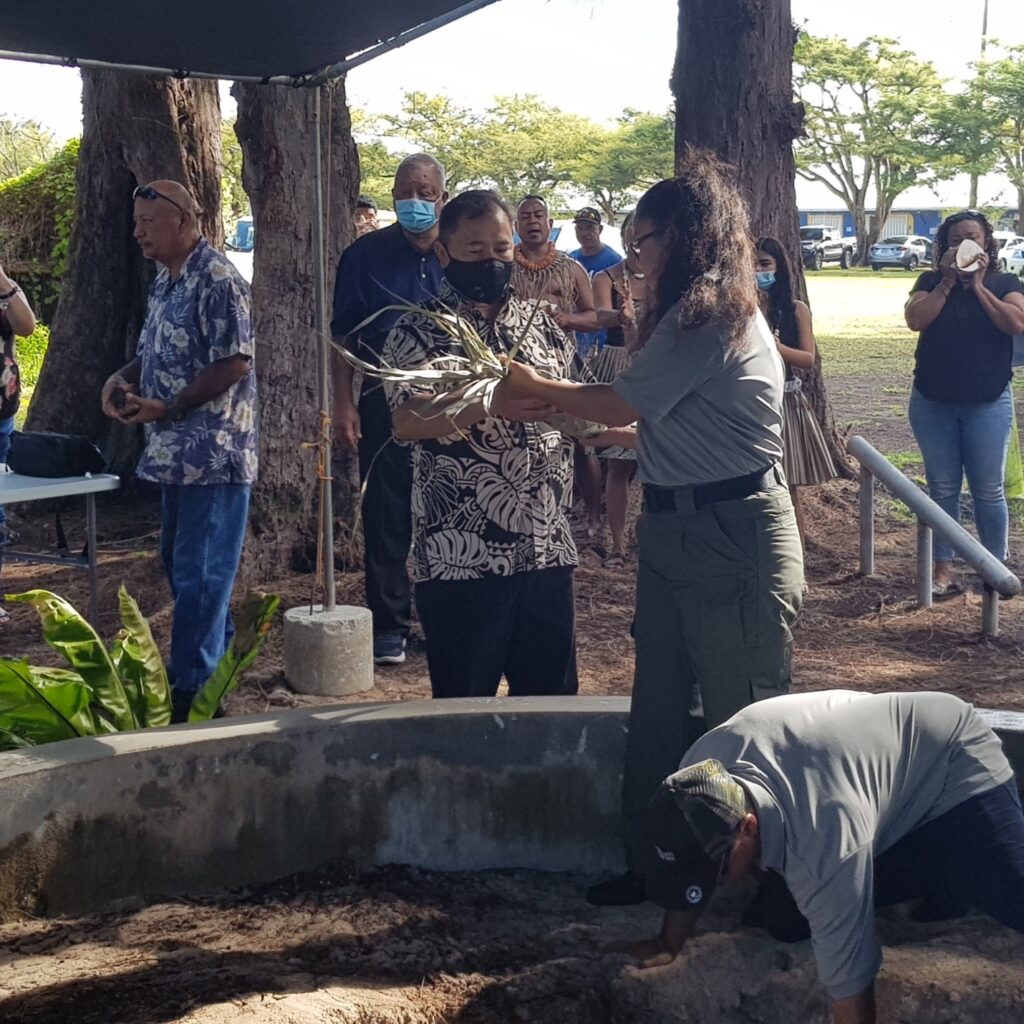Led by Historic Preservation Office and other public officials, community members gathered at the school for the traditional, indigenous reburial ceremony.
“HPO was really the backbone to this whole event,” Education Commissioner Alfred Ada said. “They feel that it [is] very important that we return…the bones [to their resting place] and I [am] very pleased.”
The reinterment was initially scheduled for Friday, Oct. 30, at 8:30 a.m., but was postponed due to bad weather conditions.
Ada said it was his first time to experience the traditional reburial of ancestral remains. “I was very moved. Just the fact that we’re asking our ancestors for forgiveness for what we’ve done and we are returning [them] back [to their resting place] says a lot. It really makes me think hard [about] my Christian faith.”
He said Hopwood students will be informed that the reburial site is a sacred place. “It’s a safe place. It is not designed for them to party or do whatever,” he added.
The ancestral land where the remains were found belongs to the Cabrera family who, on the day of the reinterment, was represented by Francisco M. Sablan Middle School principal Cherlyn Cabrera Osung.

Education Commissioner Dr. Alfred Ada, center, presents a basket of offerings that will be buried with ancestral remains at Hopwood Middle School on Friday. Photo by K-Andrea Evarose S. Limol
Osung shared her family’s oral history of the land and the ancestral remains.
She said the land belonged to her great-grandparents Joaquin Taisague Cabrera and Natividad Mendiola Cabrera and their family.
In June 1944, while the Cabrera family members were farming their land, U.S. forces invaded the island.
“They were so scared that they ran as fast as they could for the hills,” said Osung, adding that as people fled, many were trampled to death.
After the war, the Cabreras and other local residents were interred in Camp Chalan Kanoa. Some Cabrera family members, however, were never seen again, including Osung’s great-grandfather Joaquin.
When local residents were finally allowed to leave the camp in July 1946, the Cabrera family returned to their land, only to find that the U.S. naval administration had occupied it and was planning to construct a school there.
According to HPO, the ancestral remains reinterred at Hopwood may predate the World War II era because certain ancient artifacts were found with the remains.
Osung felt it was important to be present for the reburial so she could pay her respects, not only to her ancestors, but to all of the lives lost in the war, especially those who were never properly buried.
Learning from history
Department of Community and Cultural Affairs acting Secretary Joseph P. Deleon Guerrero, a former historic preservation officer, was also present for the reburial and shared his thoughts about the ceremony.
“Our students can learn about the ancient people,” he said, adding that several areas around the island have latte stones and plaques signifying where ancestral remains are buried. These include the Hard Rock Café area in Garapan.
He said when developers break ground and construct new structures, ancestral remains tend to be found on-site. HPO will then excavate and study the remains, and prepare them for reburial.
Usually, he added, developers pay for the scientific study or analysis of the remains, as well as the interpretive displays.
“Here [at Hopwood], this is a government project. We’re going to see how we can…scrounge around for funding so that we can…share what was learned, [and] honor and respect our ancient people,” Deleon Guerrero said.
HPO Director Rita Chong, for her part, said, “We are just very happy that we could get the remains of our ancestors back [to] where they belong.”
She noted that the reburial on Friday morning was similar to the ceremony for the ancestral remains laid to rest at the Imperial Pacific International construction site in August.
She said the Hopwood remains were excavated in 2004 and had been in the HPO repository along with other remains found at other construction sites.
Chong said HPO will continue to coordinate with all stakeholders to rebury the remains that are still in the HPO repository.
“Every time a big construction project happens in the CNMI and ancestral remains are unearthed… reburials will happen,” she added.











